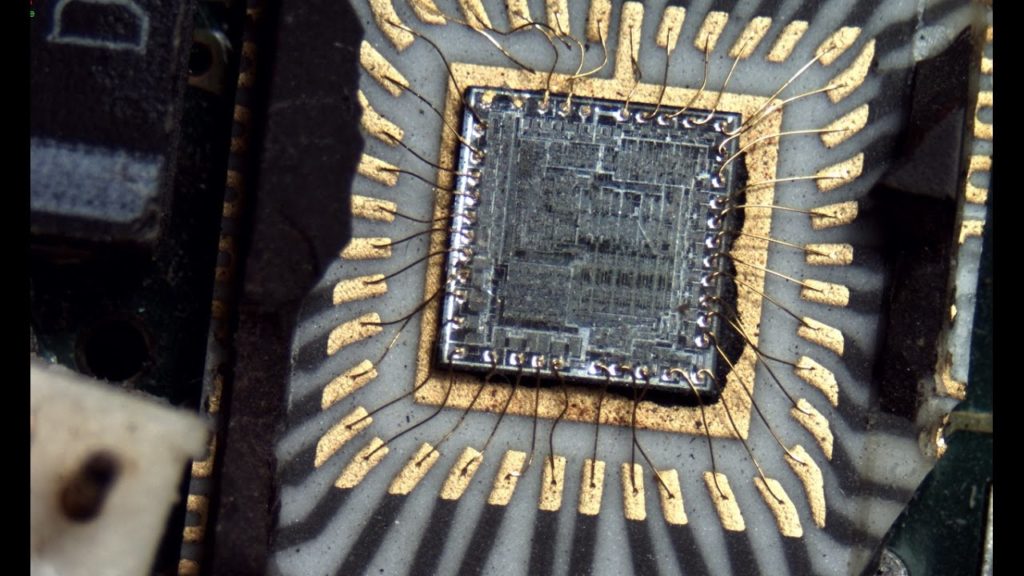Clone IC AT87F51 Code
We can Clone IC AT87F51 Code, please view the IC AT87F51 features for your reference:
The AT87F51 is a low-power, high-performance CMOS 8-bit microcomputer with 4K bytes of QuickFlash Programmable Read Only Memory. The device is manufactured using Atmel’s high density nonvolatile memory technology and is compatible with the industry standard MCS-51™ instruction set and pinout when Clone IC.
The on-chip QuickFlash allows the program memory to be user programmed by a conventional nonvolatile memory programmer. By combining a versatile 8-bit CPU with QuickFlash on a monolithic chip, the Atmel AT87F51 is a powerful microcomputer which provides a highly flexible and cost effective solution to many embedded control applications if Clone IC.
The AT87F51 provides the following standard features: 4K bytes of QuickFlash, 128 bytes of RAM, 32 I/O lines, two 16-bit timer/counters, a five vector two-level interrupt architecture, a full duplex serial port, on-chip oscillator and clock circuitry. In addition, the AT87F51 is designed with static logic for operation down to zero frequency and supports two software selectable power saving modes before Clone IC.
The Idle Mode stops the CPU while allowing the RAM, timer/counters, serial port and interrupt system to continue functioning. The Power Down Mode saves the RAM contents but freezes the oscillator disabling all other chip functions until the next hardware reset after Clone IC.
Port 0 is an 8-bit open drain bidirectional I/O port. As an output port each pin can sink eight TTL inputs. When 1s are written to port 0 pins, the pins can be used as high impedance inputs.
Port 0 may also be configured to be the multiplexed low-order address/data bus during accesses to external program and data memory. In this mode P0 has internal pullups if Clone IC.
Port 0 also receives the code bytes during QuickFlash programming, and outputs the code bytes during program verification. External pullups are required during program verification.
Port 1
Port 1 is an 8-bit bidirectional I/O port with internal pullups when Clone IC.
The Port 1 output buffers can sink/source four TTL inputs. When 1s are written to Port 1 pins they are pulled high by the internal pullups and can be used as inputs. As inputs, Port 1 pins that are externally being pulled low will source current (IIL) because of the internal pullups after Clone IC.
Port 1 also receives the low-order address bytes during QuickFlash programming and verification.
Port 2
Port 2 is an 8-bit bidirectional I/O port with internal pullups. The Port 2 output buffers can sink/source four TTL inputs. When 1s are written to Port 2 pins they are pulled high by the internal pullups and can be used as inputs. As inputs,
Port 2 pins that are externally being pulled low will source current (IIL) because of the internal pullups before Clone IC.
Port 2 emits the high-order address byte during fetches from external program memory and during accesses to external data memory that use 16-bit addresses (MOVX @ DPTR). In this application it uses strong internal pullups when emitting 1s. During accesses to external data memory that use 8-bit addresses (MOVX @ RI), Port 2 emits the contents of the P2 Special Function Register when Clone IC.
Port 2 also receives the high-order address bits and some control signals during QuickFlash programming and verification.
Port 3
Port 3 is an 8-bit bidirectional I/O port with internal pullups. The Port 3 output buffers can sink/source four TTL inputs. When 1s are written to Port 3 pins they are pulled high by the internal pullups and can be used as inputs. As inputs,
Port 3 pins that are externally being pulled low will source current (IIL) because of the pullups.
Port 3 also serves the functions of various special features
Port 3 also receives some control signals for QuickFlash programming and verification.
RST
Reset input. A high on this pin for two machine cycles while the oscillator is running resets the device.
ALE/PROG
Address Latch Enable output pulse for latching the low byte of the address during accesses to external memory. This pin is also the program pulse input (PROG) during Quick Flash programming. In normal operation ALE is emitted at a constant rate of 1/6 the oscillator frequency, and may be used for external timing or clocking purposes. Note, however, that one ALE pulse is skipped during each access to external Data Memory.
Tags: ic encrypted archive clone,ic encrypted code clone,ic encrypted content clone,ic encrypted data clone,ic encrypted eeprom clone,ic encrypted file clone,ic encrypted firmware clone,ic encrypted information clone,ic encrypted memory clone,ic encrypted program clone



